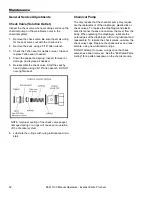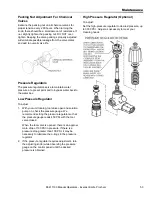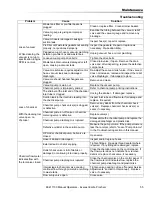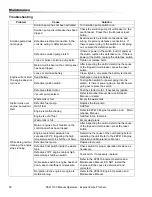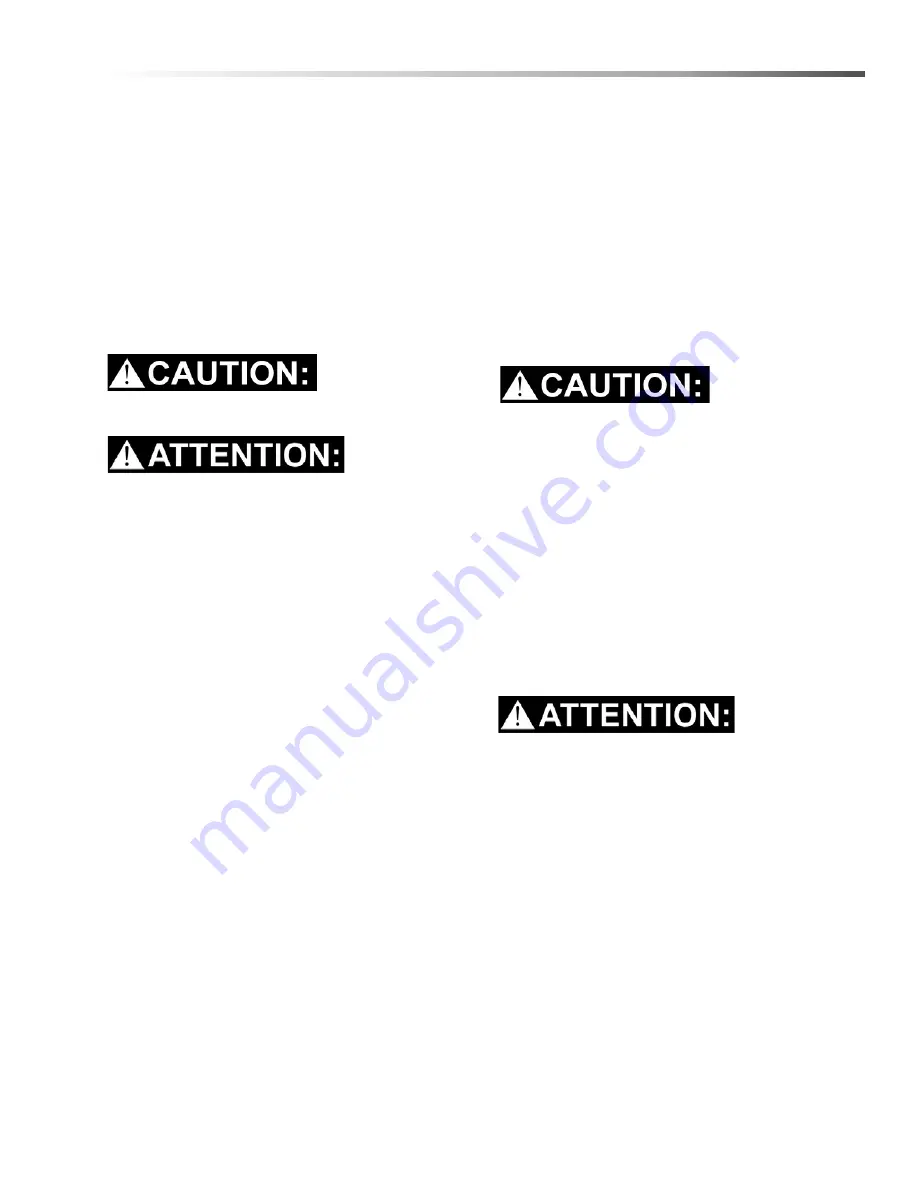
41
Operations
Operation
The "HP" units are equipped with a solution pump and
water delivery system that can support pressure-
washing operations up to 5 gallons per minute at 3000
PSI. This system is normally used for high-pressure
washing and hard surface cleaning.
1.
Move the temperature control lever from the "hot"
position to the "warm" position.
2.
Allow water temperature to cool to below
160 deg F.
3.
Close ball valve located between the chemical
pump and the water pump.
Failure to close this valve will result in severe
damage to the chemical pump diaphragms.
Le non-respect de la consigne de fermer cette
soupape risquerait d'entraîner des dommages
graves aux diaphragmes de la pompe pour produits
chimiques.
4.
Connect HP hose to either a pressure wash gun or
hard surface cleaning tool for high pressure
cleaning. Connect other end of hose to high-
pressure solution outlet.
5.
Move the pressure selection valve from the "low
pressure" position to the "high pressure" position.
6.
Adjust high-pressure regulator to desired opera-
tional pressure.
High Pressure Shutdown & Return To Low
Pressure System
1.
Turn off solution pump and release pressure.
2.
Bleed off excessive pressure build-up by operating
pressure washer gun for 5 seconds.
3.
Move solution selector control valve from "High
Pressure" operations to "Low Pressure" operation.
4.
Squeeze pressure washer gun trigger again to
remove any residual pressure
5.
Disconnect high pressure gun and hose from high
pressure disconnect.
6.
Open ball valve, located between the chemical
pump and solution pump.
7.
Operate under normal low-pressure instruction or
follow normal shutdown procedures.
De-flooding Operations
De-flooding operations involve removal of water from
carpet and flooring. This differs from normal cleaning
operations in that no water or solution is required. An
automatic waste pump-out is highly recommended for
all de-flooding operations due to the large amount of
water removal often required.
1.
Move the solution temperature control lever from
the "hot" position to the "warm" position.
2.
Ensure that the solution pump switch is in the off
position.
3.
Operate with all side and rear cargo doors open.
Freezing Protection
If the unit is exposed to freezing weather the water in
the unit may freeze, causing SERIOUS DAMAGE to
the unit. To avoid this, the following is recom-
mended during the cold weather season.
When the unit is not in use, always park it in a heated
building.
While in operation, avoid long shutdowns as the unit
provides heat while running. Shut it down just prior
to leaving for the next job.
If a heated building is not available, we recommend
that you winterize the unit with anti-freeze. At
present, it is only possible to winterize units, which
do not have an auxiliary water tank. Units with
auxiliary water tanks must be stored in a heated
building when not in use.
Si l'appareil est exposé au gel, l'eau dans l'appareil
risque de geler, causant ainsi des DOMMAGES
MAJEURS à l'appareil. Pour éviter une telle situation,
il est recommandé de faire ce qui suit durant la
saison froide.
Lorsque l'appareil n'est pas utilisé, toujours
l'entreposer dans un local chauffé.
Pendant l'utilisation, éviter les arrêts prolongés, car
l'appareil fournit de la chaleur durant son fonction-
nent. Mettre l'appareil hors tension juste avant de
partir pour la tâche suivante.
Si aucun local chauffé n'est disponible, nous recom-
mandons d'hivériser l'appareil avec de l'antigel. À
l'heure actuelle, il n'est possible d'hivériser que les
appareils qui ne comporte pas de réservoir d'eau
auxiliaire. Les appareils avec des réservoirs d'eau
auxiliaires doivent être entreposés dans un local
chauffé lorsqu'ils ne sont pas utilisés.
86411100 Manual Operators - Everest E-Idle Prochem


























